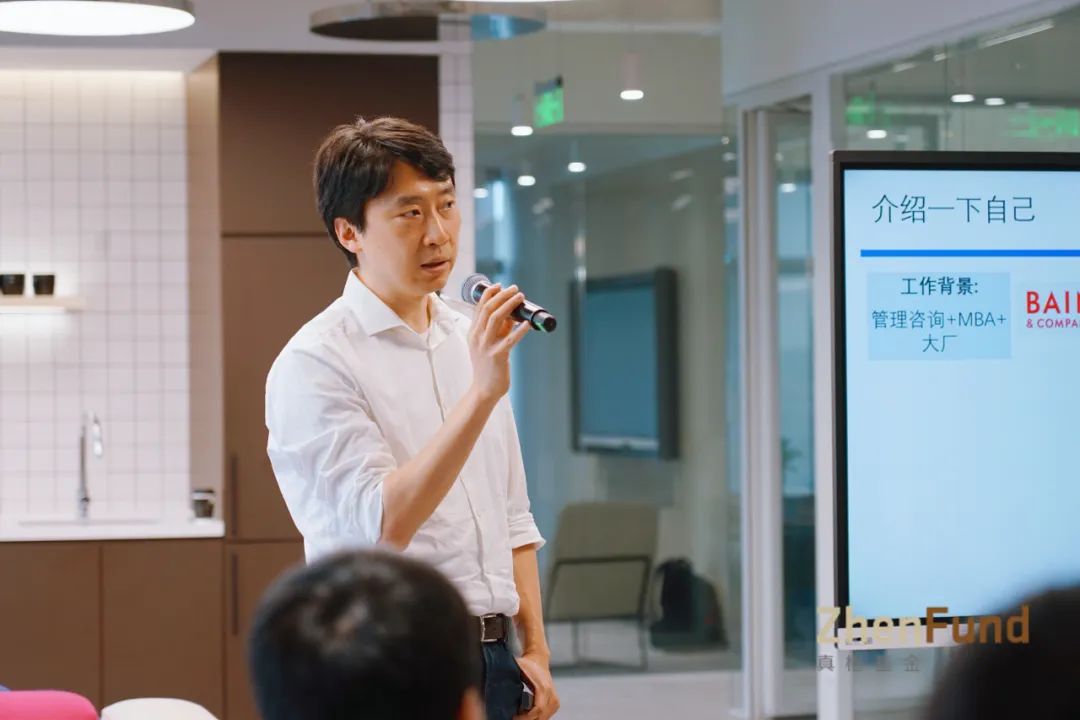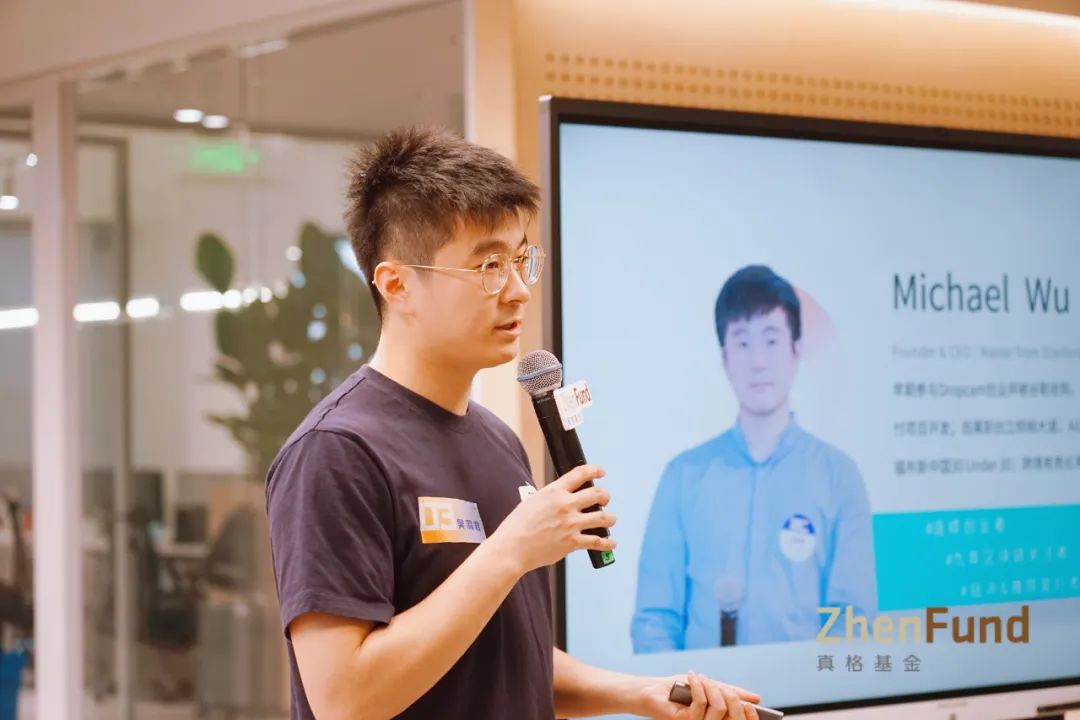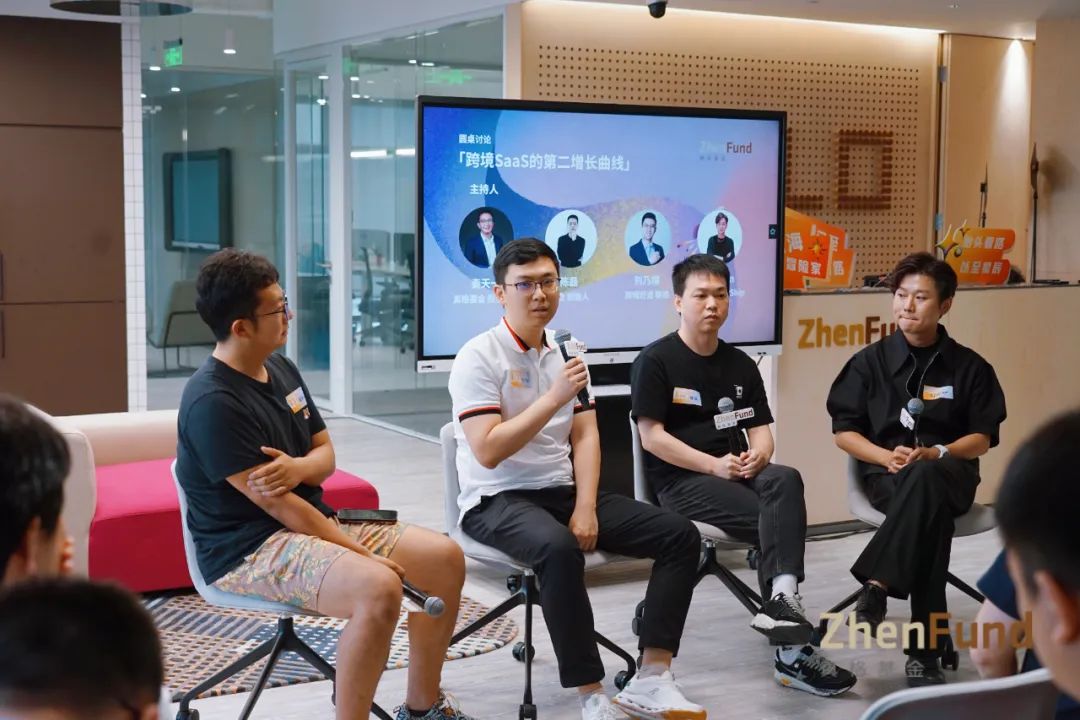On March 25th, ZhenFund held the "Looking Up | ZhenCraft·Overseas Adventurers" event in Shenzhen, inviting first-line entrepreneurs and senior professionals from various fields, such as Southeast Asian e-commerce, Global FinTech, cross-border SaaS, brand expansion, to exchange and explore the current situation of venturing overseas from multiple perspectives.
“In recent years, the field of venturing overseas has gradually converged into one direction, namely cross-border e-commerce. Apart from cross-border e-commerce, venturing overseas actually has very broad fields worth exploring and very interesting stories worth listening to, but these voices and information are often scattered in various corners of the entrepreneurial circle. As an early-stage investment institution in the primary market, ZhenFund has long focused on venturing overseas, hoping to create an interactive communication platform for venturing overseas entrepreneurs in different fields, integrate scattered information, and let them collide with each other's ideas and broaden their horizons.”
——ZhenFund Investment Director, Qin Tianyi
Keynote 1: Jungle Adventure of Southeast Asian E-commerce
Speaker: Jack Zhang, Founder of Simplus
Southeast Asia has a strong personality and cannot simply copy the Chinese model
In Thailand, I have tried multiple projects, one of which was a failed attempt at "Chinese" Korean clothing going overseas. At that time, we tried to develop the women's category on the Lazada platform, importing low-priced Korean women's clothing tailings from China's Taobao, but the sales were dismal. After communicating with young Thai women, I found that although Thai people love Korean culture, their definition of it is not completely the same as that of China's understanding of Korean style.
I realized that I couldn't simply apply Chinese concepts, but had to understand the needs of local consumers more. Not every cheap item can sell well. In fact, Southeast Asian consumers are smarter than many Chinese entrepreneurs think. Therefore, we quickly adjusted our strategy and created a local online celebrity mall, focusing on promoting local personal designer brands in Thailand. We selected top designers and used online and offline methods to let them open stores on Lazada and regularly organize events, live broadcasts, and other methods to attract new users.
This move successfully attracted a large number of new customers, improved Lazada's position in the women's market, and maintained an exclusive cooperative relationship with the designer. From these experiences, I realized that Southeast Asia is not a unified market but is composed of multiple markets with different cultures and structures. Southeast Asia has a distinctive regional personality and cannot simply copy the Chinese model.
Using methods familiar to local consumers to attract customers
The method of viral user growth has been widely used in the Chinese market. In Southeast Asia, we have tried many similar strategies, but the results have not been satisfactory. Why can platforms such as Pinduoduo successfully attract users in China through bargaining, sharing, and forwarding, but cannot replicate this successful model in Southeast Asia? After communicating with many consumers, we found that Southeast Asian consumers have a strong sense of self-esteem and are unwilling to disturb others for a small amount of benefit. These consumers value rules and do not like complicated gameplay.
Therefore, respecting local users and the market is crucial. We should use methods familiar to local consumers to increase repurchase rates, attract new customers, and bring in traffic. Only by deeply understanding and respecting local culture can we succeed in the Southeast Asian market.

Keynote 2: Global Fintech: Winning through User Experience
Speaker: Wu Yujun, Founder of QBIT
The essence of business is to establish trust and create a good user experience. In the past, many industry insiders and investors believed that Fintech companies did not need to place special emphasis on user experience and should focus mainly on the stability and pricing of the company. However, the factors that affect user retention are more than just stability and pricing.
Taking two overseas Fintech companies as examples, the first is Chime from the United States, which has successfully achieved a high valuation of $25 billion in a fiercely competitive market with its outstanding user experience. Traditional banks provided a poor user experience between 2012 and 2014, creating an opportunity for companies like Chime. By offering online account opening, Chime has made it more convenient for individual users and solved the problem of some people not being able to open a bank account or apply for a credit card, resulting in rapid growth in the ToC market.
The second company is Stripe, which developed Stripe Connect, a product that specializes in serving online marketplaces, by leveraging its superior underlying payment collection capabilities to solve internal fund allocation and reconciliation problems. This enabled Stripe to grow rapidly and collaborate with companies such as Shopify. The launch of Stripe Connect allowed Stripe to truly align with the market, providing high-quality user experience and product perspectives for large online marketplaces, and driving growth in the ToB market.
Therefore, placing emphasis on user experience and innovative product strategies is the key for Fintech companies to stand out in competition.

Keynote 3: Emerging Market Storms and Blue Oceans from the Middle East and India
Speaker: Zhu Kaiyang, Founder of Lavie Innovations
The storms in the emerging market's entertainment industry
Since the outbreak of the pandemic, Chinese entrepreneurs have faced many challenges in emerging markets. The first is the turbulence of the macro environment, which I call the "three-year storm," including political conflicts in India, the Russia-Ukraine war, and the fluctuation of the political situation in the Middle East, all of which have brought about many ups and downs.
During this period, we also observed some "undercurrents," which are some easily overlooked industry-specific changes. In the fields of short videos, live broadcasts, and games, after all Chinese apps were removed from India, the vast majority of the top 100 highest-grossing apps are still resilient Chinese live broadcast and game vest packages. Tiktok's live broadcast rewards revenue in the Arab region once exceeded that of the United States, but in the eyes of locals, the brand image did not fit with local religious and cultural traditions and fell sharply. Meanwhile, Yalla, a voice social product from China that perfectly integrates with local culture, successfully went public on the US stock market in 2020.
In the past three years, we have also become accustomed to some daily "small storms," such as exchange rate fluctuations and cross-border payment and settlement risks. We have been greatly affected by exchange rate fluctuations in countries such as Turkey, Egypt, Pakistan, and Argentina, which have had a significant impact on our business.
In the face of the complex and changing international market, we still need to continuously adjust our strategies, adapt to market changes, and deal with various storms.
Long-term blue ocean: Starting local entrepreneurship with Chinese advantages
Since China itself is a market with strong regional characteristics, most Chinese companies going abroad essentially use Chinese advantages to start local entrepreneurship. In this regard, most Chinese outbound projects are completely different from American companies' internationalization strategy.
Someone once mentioned the China-US time machine theory, which involves bringing developed countries' business models and validated products into local markets. This model also applies to Chinese companies going global. Taking the Indian market as an example, this theory was a popular entrepreneurial model 20 years ago and is still feasible to some extent. However, if the local industry rises or trade protectionism policies are added, cross-border players are likely to fail. For example, in India, a local product similar to TikTok called Sharechat quickly occupied the short video market share after TikTok was banned in 2020. Such stories are even more common in Chinese internet history.
But this situation is not common in most emerging markets. For example, China's online digital entertainment industry has no local competitors in emerging markets, including India, which creates a local competitive vacuum, making it a long-term blue ocean market for Chinese companies. For instance, the Chinese voice social product Yalla and related audio and video social products in the Middle East have created a situation where Chinese players dominate the market without being overwhelmed by local players.
In conclusion, leveraging China's advantageous resources to choose the right track for local entrepreneurship in emerging markets still presents many opportunities for building small yet long-term blue ocean businesses. Of course, this process requires special attention to respecting local rules and culture and creating value for local societies. This not only provides security from a local health management perspective but also serves as an important competitive advantage for distinguishing oneself from other Chinese friendly competitors.

Panel 1: The second growth curve of cross-border SaaS
How to break through the revenue ceiling in the SaaS industry?
From the perspective of cross-border e-commerce logistics service providers, small and medium-sized sellers may only pay a few tens of thousands of yuan for SaaS fees per year, while their logistics costs may reach tens of millions of yuan. Therefore, using SaaS as the core entry point to serve customers, moving their business flow to our system, and ultimately earning profits from transactions may be the key node to break through the growth ceiling of SaaS. At the same time, the willingness of overseas sellers to pay is significantly stronger than that of domestic sellers. Even for slight cost-reducing and efficiency-improving plugins, overseas customers are willing to pay for them. In addition, logistics service providers in overseas markets do not provide services as meticulously as in China. Domestic logistics service providers have taken their services to the extreme, even for small customers, with personnel providing quotations, plans, and delivery schedules, helping to sort and label goods, and solving all possible problems in the service. This means that the requirements for the system will be lower. However, overseas markets are still relatively rough, which increases the requirements for the system.
-Liu Nairong, Co-founder of Kuajing Haoyun
SaaS is essentially a ToB business, which means that explosive growth is difficult. If we talk about growth, I have three suggestions for friends who want to enter this industry: first, in the initial stage, professional driving should be the main focus, find a fit point between users and customers within an enterprise, and solve pain points in conflicts; in the second stage, market-driven strategies should be adopted, create industry IP and hold related events to solve customer acquisition problems; in the third stage, positioning is very important, stable and long-term paying customers should be selected, and growth quality should be taken into account.
-Chen Lei, Founder of Eccang
What is the most difficult hurdle to overcome on the entrepreneurial path? How to overcome it?
The biggest challenge we may face as a startup is how to find better-suited talents and the desire for perfection. This includes possibly recruiting some people with impressive backgrounds to join the company in the early stages. However, if the company's management capabilities cannot keep up, it may lead to some internal friction. On the capital level, the desire for perfection may also be affected. The biggest difficulty we encountered was last year when the investment we were about to close dropped due to the impact of the Russo-Ukrainian war and the global economy. Crazy expansion is also a manifestation of the desire for perfection, which can lead to poor management. It is still necessary to respect commercial objective laws and make corresponding decisions according to different stages. In addition, no matter how big the company's future development may be, it must first be a profitable company, and clear management standards and systems must be established.
-William, Founder of NextSmartShip

Panel 2: Value Capture of Emerging Market's Financial Infrastructure
What are the potential market segments and innovation opportunities with huge potential in the global FinTech sector?
I am more familiar with digital entertainment businesses and emerging markets in my business. The digital entertainment industry is considered a high-risk industry, and PayerMax provides important support in this field. Emerging markets include India, Southeast Asia, Latin America, Africa, and the Middle East, where there is often a lack of unified banking agreements and payment management. Companies like dlocal and PayerMax provide one-stop services to help merchants access global emerging markets. Emerging markets face problems such as foreign exchange fluctuations and inadequate government dollar reserves. Docal uses a payout solution to enable local spending in local currencies. In addition, I think cryptocurrencies have huge potential value in the cross-border payment field of emerging markets.
-Zhu Kaiyang,Founder of Lavie Innovations
In what areas could AIGC be applied in the FinTech sector?
AIGC's application in the FinTech sector may include collecting and analyzing more information, such as enterprise information, transaction data, and user ratings on social media. Inputting this information into the AIGC model may result in more accurate scoring and judgments than traditional methods, thereby achieving more intelligent financial services. AIGC's application scenarios include improving rating effects, discovering potential problems, and optimizing financial services.
-Lin Sen,Aisalinq partner
I think it may mainly focus on the C-end application side and advertising marketing. In payment business, AIGC may not have a direct impact on the success rate of payments, but in financial services such as loan business, its application may be more meaningful. AIGC can be used to collect and analyze a large amount of data on enterprise or individual credit reporting to improve the efficiency and accuracy of financial services. However, in communication with customers, human service may still be the most effective way, as robots may lack emotional connections.
-Wang Chen,Shareit CSO
A major pain point for Chinese individual creators and small and medium-sized entrepreneurs exploring overseas markets is the need to register overseas companies and manage payment and foreign exchange. There are already good solutions in e-commerce and APP fields such as pingpong and Google Play, but new industries such as SaaS cloud services and short video content creators have not yet provided convenient and low-threshold overseas payment and settlement services for these developers/creators to solve their difficulties in the early stages of going overseas.
- Zhu Kaiyang,Founder of Lavie Innovations
The Tao of Building a Global Native Brand
From the perspective of your own brand, what is your core competitiveness? What are the winning hands in your respective fields?
First of all, I think doing things is about going with the flow. Our core competitiveness is integrating China's manufacturing dividends and Shenzhen's talents, and adding powerful channel development and brand operation capabilities to go overseas. Our competitors are mainly large American brands, similar to China's Gree and Midea. The first challenge we face in breaking through the brand positioning is to be able to position the brand in the mid-to-high price range. The next challenge is omni-channel sales and three-dimensional marketing. Unlike in China, 80% of sales in the United States and Europe are offline, and Chinese brands must open up offline channels. In this segment of channel development, Chinese brand competitors are relatively few, so the current channel development is still smooth.
-Eric, Founder of Hesung Innovation
From a branding perspective, our core competitiveness lies in starting with customer needs and building superior products, services, and systematic capabilities to serve overseas consumers. The main challenges are the high degree of professionalism and management difficulty, especially in the face of a massive SKU (stock keeping unit) inventory, which requires strong supply chain management capabilities. If we need to stock overseas, the demand for management capability will be even higher. Assuming there are 100 SKUs that need to be replenished in a day, we need to allocate inventory between domestic warehouses, sales warehouses, and supplier warehouses, and determine how many orders to place and how to ship the products. A lot of work needs to be done. Our company has invested a lot of money in BI (business intelligence) and IT, and has initially developed some supply chain management capabilities. In the long run, as the number of SKUs increases, the value of supply chain management efficiency will become more and more prominent. Overall, our core competitiveness lies in understanding consumer needs, selecting and combining products under the demand scenario, and having strong supply chain management capabilities.
-Lin Zhongxing, Founder of Sailing Wood
Our core competitiveness lies in our cognitive ability, including our understanding of consumer needs, market trends, competitors, and our own strengths. In the food industry, we adhere to the belief that "quality is life" and pay attention to product quality. We also recognize the importance of "benefiting others", that is, being consumer-oriented and providing the most cost-effective products, which is the key to building a business model. At the same time, we also need to consider how to optimize production and operations based on market and cost, in order to maximize equipment efficiency. When entering different markets, we also need to find differentiated channels from a "benefiting others" perspective and provide products with core competitiveness. These cognitions run through the entire corporate culture, and the cognition of learning and future trends is also an important part of core competitiveness.
-Zhang Li, Founder of Lifu

